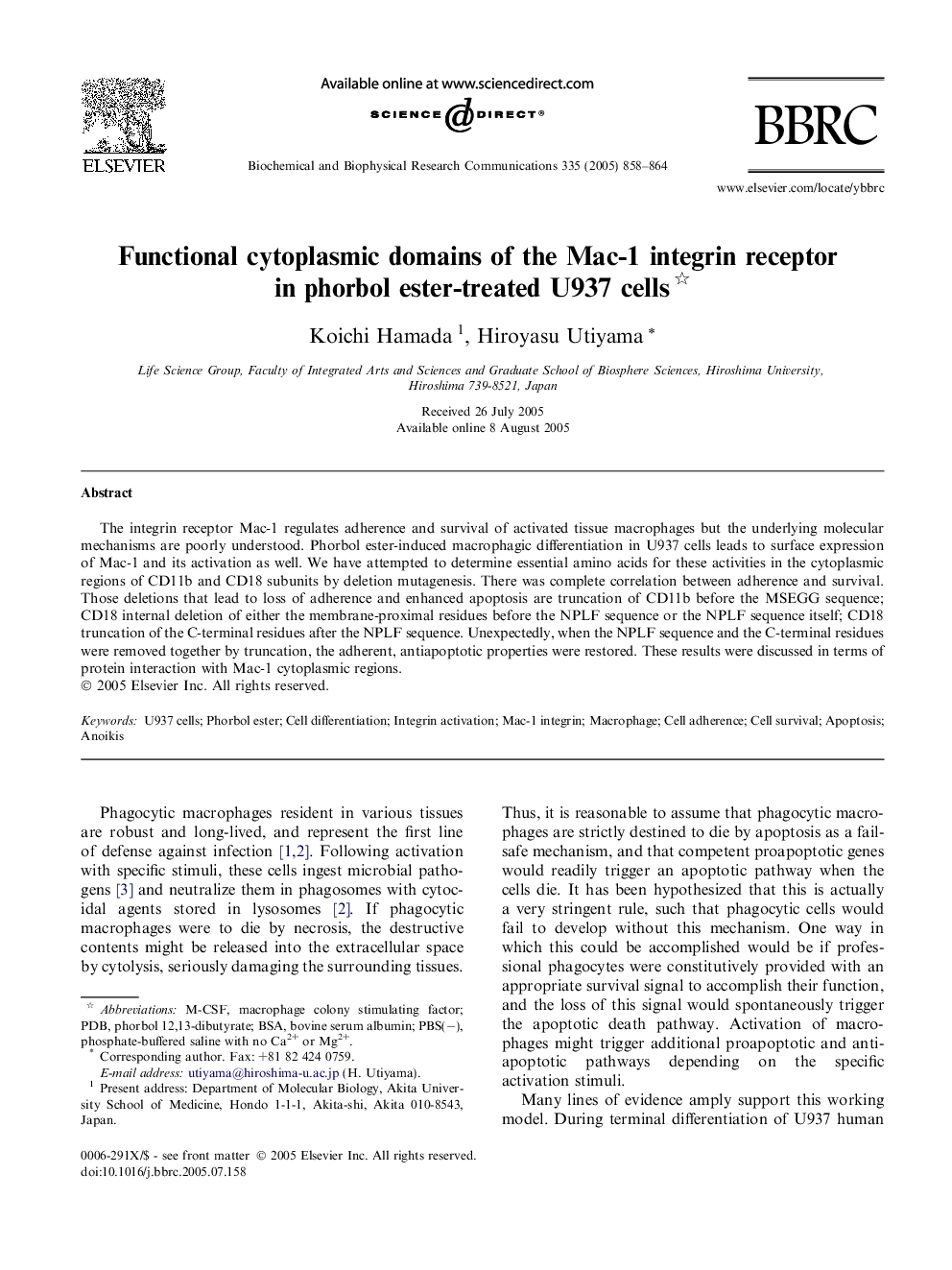| Article ID | Journal | Published Year | Pages | File Type |
|---|---|---|---|---|
| 10768760 | Biochemical and Biophysical Research Communications | 2005 | 7 Pages |
Abstract
The integrin receptor Mac-1 regulates adherence and survival of activated tissue macrophages but the underlying molecular mechanisms are poorly understood. Phorbol ester-induced macrophagic differentiation in U937 cells leads to surface expression of Mac-1 and its activation as well. We have attempted to determine essential amino acids for these activities in the cytoplasmic regions of CD11b and CD18 subunits by deletion mutagenesis. There was complete correlation between adherence and survival. Those deletions that lead to loss of adherence and enhanced apoptosis are truncation of CD11b before the MSEGG sequence; CD18 internal deletion of either the membrane-proximal residues before the NPLF sequence or the NPLF sequence itself; CD18 truncation of the C-terminal residues after the NPLF sequence. Unexpectedly, when the NPLF sequence and the C-terminal residues were removed together by truncation, the adherent, antiapoptotic properties were restored. These results were discussed in terms of protein interaction with Mac-1 cytoplasmic regions.
Keywords
Related Topics
Life Sciences
Biochemistry, Genetics and Molecular Biology
Biochemistry
Authors
Koichi Hamada, Hiroyasu Utiyama,
